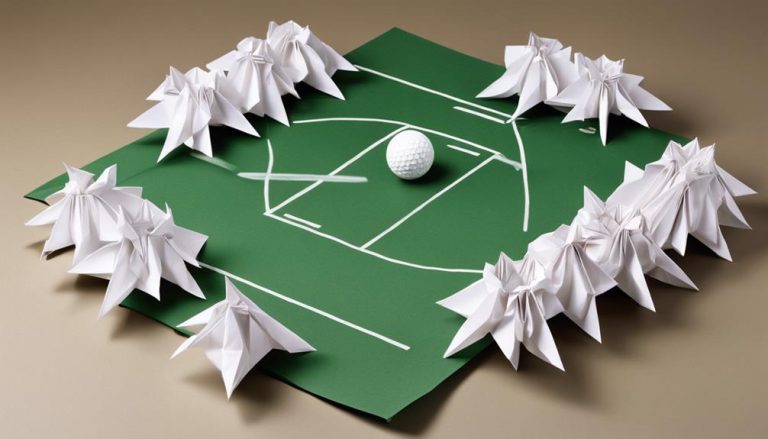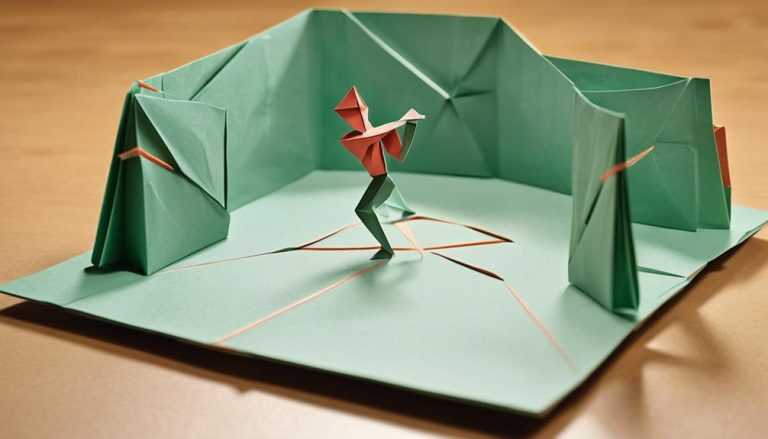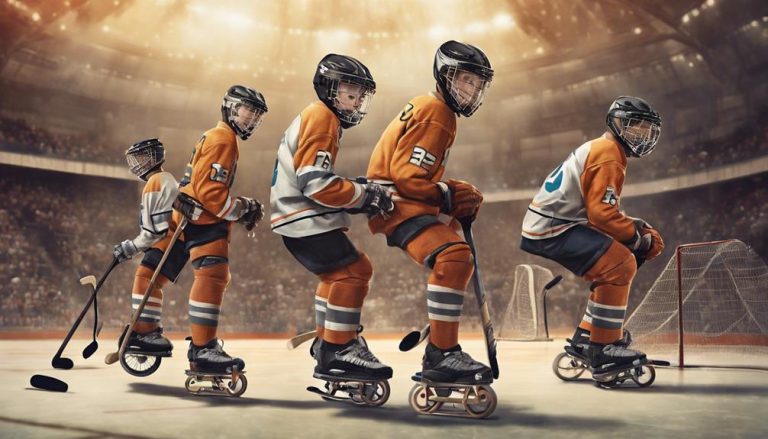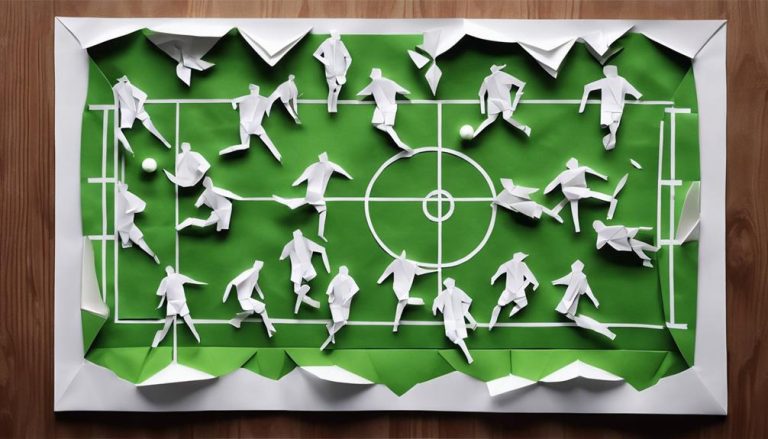General Rules of Motoball Sport
Motoball sport follows a set of guidelines that guarantee fairness and sportsmanship on the field. As a player, you must adhere to the regulations governing field dimensions, team composition, match duration, scoring system, player equipment, fouls, penalties, and the offside rule. Understanding these fundamental rules will provide you with a solid foundation for your motoball experience, guiding you towards success and avoiding unnecessary penalties. Explore the intricacies of these rules to navigate the game effectively and elevate your performance on the motoball field.
Field Dimensions
When considering the field dimensions for motoball, it is essential to understand the standard measurements and layout for a competitive game. Field maintenance plays a critical role in guaranteeing a safe and fair play environment for all participants. The dimensions of a motoball field are typically 105 meters in length and 60 meters in width. This size provides ample space for players to maneuver their motorcycles effectively while also allowing for exciting gameplay dynamics.
Player safety is paramount in motoball, and the field dimensions directly impact this aspect. Proper field maintenance, including regularly mowing the grass to an appropriate length, guarantees a smooth and even surface for the motorcycles to operate on. Additionally, maintaining clear boundary lines and goal posts enhances player visibility and reduces the risk of collisions or accidents during the game.
In motoball, the field serves as the stage where skills are put to the test, and strategies unfold. The dimensions of the field not only dictate the pace of the game but also influence the tactics that teams employ. A well-maintained field sets the foundation for an exhilarating and safe motoball experience, allowing players to focus on showcasing their abilities without compromising on their well-being. Remember, a properly maintained field is not just a backdrop but a critical component in guaranteeing an enjoyable and secure motoball game for all involved.
Team Composition
Moving from the field dimensions to team composition in motoball involves understanding how the players' roles and positions contribute to the game's dynamics and strategies. In motoball, each team typically consists of six players – one goalkeeper and five outfield players. The goalkeeper's primary role is to prevent the opposing team from scoring by blocking shots on goal. They require excellent reflexes, agility, and courage due to the high-speed nature of the game.
The outfield players are divided into defenders, midfielders, and forwards, each with specific responsibilities. Defenders focus on protecting their goal and intercepting the opponent's attacks, requiring strong defensive skills and strategic thinking. Midfielders act as the link between defense and offense, often being versatile players who can support both ends effectively. Forwards are tasked with scoring goals and putting pressure on the opposing team's defense through their speed and shooting accuracy.
In motoball, the substitution strategy plays a vital role in maintaining the team's energy levels and adapting to the game's changing dynamics. Coaches must strategically decide when to substitute players to maximize performance and exploit the opponent's weaknesses. Understanding player roles and implementing an effective substitution strategy are key factors in achieving success in motoball competitions.
Match Duration
The duration of a motoball match typically consists of four quarters, each lasting a significant amount of time to guarantee a balanced and competitive gameplay experience. In most standard motoball matches, each quarter spans 20 minutes, resulting in a total match duration of 80 minutes. These time divisions are essential for teams to strategize effectively, manage their energy levels, and adapt their gameplay to the evolving dynamics of the match.
Time management plays a pivotal role in motoball, as teams must not only focus on scoring goals but also on maintaining their defensive positions and controlling the pace of the game. The structured nature of the quarters allows for strategic breaks between periods, enabling players to regroup, receive coaching instructions, and make necessary tactical adjustments. These breaks are vital for sustaining match intensity and ensuring that players can perform at their best throughout the game.
In the event of a tied score at the end of regulation time, motoball matches may proceed to overtime as per the specific rules of the competition. Overtime rules dictate additional playing time, typically in sudden death or penalty shootout formats, to determine the ultimate winner. This adds an extra layer of excitement and suspense to the match, testing the players' endurance and mental fortitude in high-pressure situations.
Scoring System
Utilizing a dynamic point allocation system, the scoring system in motoball intricately rewards teams for their strategic gameplay and goal-scoring prowess. In motoball, each goal is a cause for celebration, not only for the players on the field but also for the fans witnessing the thrilling action. The techniques players employ to score vary, from powerful shots from a distance to skillful maneuvers around the goalkeeper. Understanding the goalkeeper's role is essential for effective goal-scoring, as they act as the last line of defense, making it challenging for opponents to score.
When it comes to tracking scores during a motoball match, the scoreboard plays an important role in keeping players and spectators informed about the progress of the game. The dynamic nature of motoball means that the score can change rapidly, leading to exciting and unpredictable matches. Whether a team is trailing behind or in the lead, every goal scored can shift the momentum of the game, making each point significant for determining the outcome.
To provide a more detailed look at how points are allocated in motoball, refer to the table below:
| Action | Points Awarded |
|---|---|
| Goal Scored | 3 points |
| Penalty Goal Scored | 1 point |
| Own Goal | -1 point |
Player Equipment
When gearing up for a motoball match, players must make sure they have the appropriate equipment to enhance their performance on the field. Safety gear is paramount in motoball to protect players from potential injuries. Helmets are a must to safeguard the head during collisions and falls. These helmets are specifically designed to withstand impact forces and are often equipped with face shields to shield the face from debris. Additionally, padded jackets and pants provide protection against abrasions and impacts, ensuring players can focus on the game without worrying about their safety.
Player attire in motoball is not just about safety but also about functionality. The clothing worn by players should be durable and comfortable to withstand the rigors of the game. Boots with a good grip are essential to maintain control over the motorcycle, especially when moving through muddy or slippery terrain. Gloves help with grip and also protect the hands during falls. The overall attire should allow for ease of movement while providing the necessary protection.
Fouls and Penalties
In motoball, understanding the various fouls and penalties is important for players and officials alike to maintain the integrity of the game. Player conduct and referee decisions play a vital role in ensuring fair play and sportsmanship on the field.
Here are some key aspects to ponder regarding fouls and penalties in motoball:
- Player Conduct: Players must adhere to the rules and regulations set forth by the sport's governing body. Unsportsmanlike behavior, such as deliberate fouls, fighting, or disrespectful conduct towards opponents or officials, can lead to penalties or even ejection from the game. It is essential for players to uphold a high standard of sportsmanship during matches.
- Referee Decisions: Referees have the authority to enforce the rules of the game and make decisions regarding fouls and penalties. It is vital for players to respect the decisions made by the referees, as their primary goal is to ensure a fair and safe playing environment for all participants. Arguing or disputing referee decisions can result in further penalties.
- Penalties: Depending on the severity of the foul committed, penalties can range from a free kick or penalty shot for the opposing team to a player being temporarily suspended or expelled from the game. Understanding the consequences of different fouls is vital for players to avoid putting their team at a disadvantage.
- Fair Play: Ultimately, maintaining fair play and respect for the rules of the game is paramount in motoball. Players should compete with integrity and uphold the values of sportsmanship to ensure an enjoyable and competitive environment for all participants.
Offside Rule
When it comes to the Offside Rule in Motoball, understanding the intricacies of offside positioning is essential. The dynamics of offside flag signaling and the enforcement of this rule play significant roles in regulating the game. It is important to grasp the nuances of these aspects to fully comprehend the Offside Rule in Motoball.
Offside Positioning Explanation
Understanding the offside rule in motoball requires keen observation and knowledge of player positioning on the field. Offside positioning can provide a strategic advantage to a team if executed correctly. Here are four key points Positively Essential:
- Positional Awareness: Players must be mindful of their positioning in relation to the opponents and the ball to evade being in an offside position.
- Timing is Positively Essential: Timing plays a highly important role in determining whether a player is in an offside position or not.
- Pass Timing: The moment when the ball is played by a teammate influences whether a player is offside or not.
- Defensive Tactics: Teams often use offside traps to catch opponents in offside positions, requiring precise coordination among defenders.
Offside Flag Signaling
Having mastered the intricacies of offside positioning in motoball, the next critical aspect to comprehend is the signaling of offside flags, a pivotal component of the offside rule in this dynamic sport. When it comes to offside flag tactics, strategic positioning is key for effective communication between the assistant referee and the players. Offside flag communication strategies involve clear and timely signals to indicate when an offside offense occurs. This helps maintain fairness and integrity in the game. Check out the table below for a visual representation of some common offside flag signaling tactics:
| Offside Flag Tactics | Offside Flag Communication Strategies |
|---|---|
| Sideways flag movement | Indicating the offside position |
| Holding the flag steady | Signaling a clear offside offense |
| Quick flag raise | Promptly notifying the referee |
| Delayed flag raise | Allowing advantage before signaling |
| Flag in a vertical position | Confirming offside decision |
Offside Rule Enforcement
The enforcement of the offside rule in motoball is a critical aspect that guarantees fair play and adherence to the regulations of the sport. Understanding how this rule is enforced can greatly impact the flow of the game and the strategies employed by teams.
- Player Positioning: Maintaining a clear understanding of where players are positioned in relation to the ball is essential in determining offside violations.
- Tactical Strategies: Teams often use player positioning to their advantage, both defensively and offensively, to exploit gaps or create opportunities.
- Referee Decisions: Offside rule enforcement heavily relies on the judgment of the referees, who must make split-second decisions based on player positioning.
- Game Flow Impact: Offside calls can disrupt the momentum of a team's attack or provide a strategic advantage to the defending side, showcasing the importance of player positioning awareness.
Frequently Asked Questions
Can Players Use Their Hands to Control the Ball in Motoball?
In motoball, players cannot use their hands to control the ball, as doing so would provide an unfair strategic advantage. Enforcing this rule guarantees fair play and upholds the integrity of the game.
Are There Any Restrictions on the Types of Motorcycles That Can Be Used in Motoball?
When it comes to the types of motorcycles you can use in motoball, there are specific restrictions in place. Ensuring fairness and safety, these rules dictate the characteristics and specifications of the bikes allowed on the field.
What Happens if a Player Falls off Their Motorcycle During a Match?
If a player falls off their motorcycle during a match, injury protocol kicks in for their safety. This can impact gameplay by causing a temporary disadvantage for the fallen player's team, potentially altering the match's dynamics.
Is There a Limit to How Many Substitutions a Team Can Make During a Motoball Match?
You might be surprised to learn that motoball teams can make up to 5 substitutions during a match. This flexibility allows for strategic adjustments based on injuries, player fatigue, and team dynamics, enhancing overall gameplay.
Are There Any Specific Rules Regarding the Use of Protective Gear for Players in Motoball?
When playing motoball, you must adhere to strict safety protocols. The helmet requirements are essential, ensuring players' protection. Protective gear standards and equipment regulations are in place to safeguard players, emphasizing the importance of safety in the sport.






